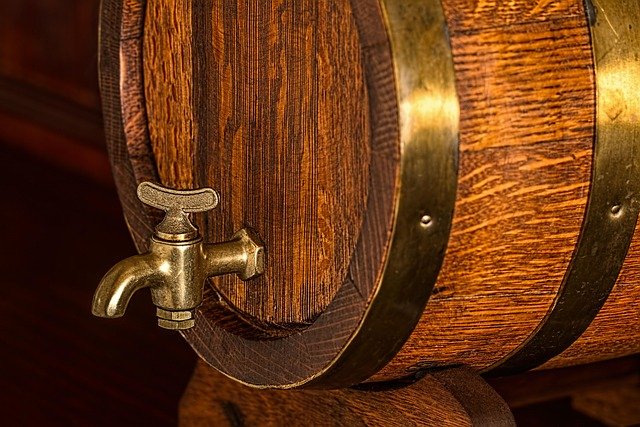Upcycling Antique Doorknobs: A Twist on Vintage Charm
Picture this: You're strolling through a flea market when a glint of brass catches your eye. It's a collection of antique doorknobs, their intricate designs whispering tales of bygone eras. But instead of relegating these beauties to a dusty shelf, imagine transforming them into stunning focal points throughout your home. Welcome to the world of doorknob upcycling, where vintage hardware becomes modern art.

A Brief History of Decorative Doorknobs
To truly appreciate the art of doorknob upcycling, one must understand the rich history behind these small yet significant home fixtures. Doorknobs as we know them today emerged in the mid-19th century, coinciding with the Industrial Revolution. Prior to this, doors were typically operated by latches or simple handles.
The Victorian era marked the golden age of decorative doorknobs. Craftsmen produced elaborate designs in materials ranging from glass and porcelain to various metals. Each knob was a miniature work of art, often reflecting the architectural style of the building or the personal taste of the homeowner.
The Allure of Antique Hardware in Modern Spaces
In an age of mass-produced home goods, antique doorknobs offer a unique appeal. Their intricate patterns, patina, and the weight of history they carry provide a depth and character that modern replicas simply cannot match. When repurposed creatively, these pieces become conversation starters, adding layers of interest to contemporary interiors.
Creative Upcycling Ideas
The key to successful doorknob upcycling lies in seeing beyond their original purpose. Here are some innovative ways to breathe new life into these vintage treasures:
-
Wall-Mounted Jewelry Organizer: Create a functional piece of wall art by mounting doorknobs on a rustic wooden board. Use them to hang necklaces, bracelets, and scarves for an organized and visually appealing display.
-
Eclectic Coat Rack: Combine doorknobs of various styles and finishes on a reclaimed wood plank for a unique coat rack that marries function with flair.
-
Bookends with Character: Attach doorknobs to heavy bases to create charming bookends that add personality to your shelves.
-
Curtain Tiebacks: Use ornate doorknobs as elegant curtain tiebacks, adding a touch of vintage glamour to your window treatments.
-
Cabinet and Drawer Pulls: Replace standard hardware on dressers, cabinets, or kitchen drawers with mismatched antique doorknobs for an instant upgrade.
Sourcing and Selecting Antique Doorknobs
The hunt for the perfect antique doorknobs is part of the charm of this upcycling trend. Flea markets, antique shops, and online marketplaces are treasure troves for these vintage pieces. When selecting doorknobs for your projects, consider the following:
-
Condition: While a weathered patina can be desirable, ensure the knob is structurally sound.
-
Style: Choose knobs that complement your existing decor or create an intentional contrast.
-
Material: Brass, bronze, glass, and porcelain are common materials, each offering a distinct look and feel.
-
Rarity: Some designs or materials may be more valuable to collectors. Research before repurposing particularly rare pieces.
Restoration and Preparation Techniques
Before incorporating antique doorknobs into your decor, some restoration may be necessary. Here’s a guide to preparing your finds:
-
Cleaning: Gently clean the knobs using appropriate methods for their material. For metal knobs, a mixture of mild soap and water often suffices.
-
Removing Paint: If the knobs are painted over, use a non-toxic paint stripper to reveal the original finish.
-
Polishing: For metal knobs, consider whether you prefer a polished shine or a natural patina. Use metal polish sparingly to maintain character.
-
Repairs: Address any loose parts or cracks. For valuable pieces, consult a professional restorer.
Incorporating Upcycled Doorknobs into Your Decor Scheme
The versatility of antique doorknobs allows them to complement various interior styles:
-
Eclectic Spaces: Mix and match doorknobs of different eras and styles for a curated, collected look.
-
Industrial Chic: Pair brass or iron doorknobs with raw materials like exposed brick or reclaimed wood.
-
Shabby Chic: Emphasize the weathered patina of old porcelain knobs in a soft, romantic setting.
-
Modern Contrast: Use ornate doorknobs as unexpected accents in minimalist interiors for a striking juxtaposition.
The Art of Arrangement
When using doorknobs as decor, consider the principles of design:
-
Symmetry vs. Asymmetry: Decide whether a balanced or more dynamic arrangement suits your space.
-
Grouping: Create impact by clustering knobs of similar styles or contrasting designs.
-
Color Coordination: Use the metallic tones or colors of the knobs to tie into your overall color scheme.
-
Scale: Mix larger doorknobs with smaller ones for visual interest and to draw the eye across the arrangement.
DIY Project: Doorknob Photo Display
Here’s a step-by-step guide to creating a unique photo display using antique doorknobs:
-
Select a wooden board and sand it to your desired finish.
-
Arrange your chosen doorknobs on the board, marking their positions.
-
Drill pilot holes for each doorknob.
-
Attach the doorknobs using appropriate screws or bolts.
-
Add picture hangers to the back of the board.
-
Hang your creation and use decorative clips or strings to attach photos to the knobs.
This project not only showcases your vintage finds but also creates a personalized and ever-changing art piece.
Preserving History While Creating New Stories
Upcycling antique doorknobs is more than a design trend; it’s a way of honoring craftsmanship of the past while creating new narratives in our homes. Each knob carries with it a history – the hands that turned it, the doors it opened, the secrets it kept. By reimagining these pieces in our modern spaces, we’re not just decorating; we’re continuing their stories and adding our own chapters.
As we embrace this creative reuse of vintage elements, we also contribute to a more sustainable approach to home decor. By giving new life to old objects, we reduce waste and decrease demand for new production, aligning our aesthetic choices with environmental consciousness.
The art of doorknob upcycling invites us to see the extraordinary in the ordinary, to find beauty in the overlooked, and to connect with the tactile history of our living spaces. It’s a reminder that sometimes, the most charming additions to our homes aren’t found in catalogs or showrooms, but in the dusty corners of history, waiting to be polished, reimagined, and loved anew.





